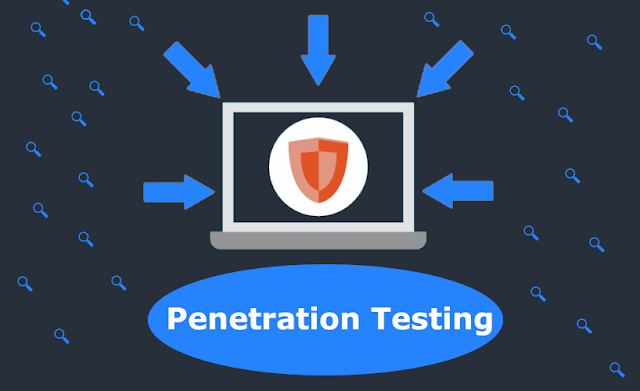Penetration Testing: Step-by-Step Guide
In today’s digital-first world, cyber threats are more sophisticated than ever. Businesses, governments, and institutions are continuously under attack from malicious actors attempting to exploit vulnerabilities in their systems. One of the most effective ways to proactively defend against such threats is through penetration testing—a simulated cyberattack conducted to assess and strengthen an organization’s security posture.
If you're planning to build a career in cybersecurity or ethical hacking, understanding the fundamentals of penetration testing is essential. Enrolling in a Best Cyber Security Course in Pune can give you the skills and practical experience needed to perform real-world penetration tests effectively.
What is Penetration Testing?
Penetration testing, often referred to as pen testing, is a method of evaluating the security of a system by simulating an attack from a malicious hacker. The objective is to identify and fix security weaknesses before they can be exploited in real attacks.
Unlike automated vulnerability scans, penetration testing involves a mix of manual and automated techniques, requiring both technical skills and critical thinking.
Why is Penetration Testing Important?
Penetration testing is crucial for:
-
Identifying vulnerabilities in applications, networks, and systems.
-
Assessing the impact of potential cyberattacks.
-
Meeting compliance and regulatory requirements (like GDPR, ISO 27001).
-
Strengthening security defenses proactively.
-
Educating stakeholders on potential risks and remediation.
By simulating real-world attacks, penetration testing provides organizations with a realistic view of their current security posture.
Types of Penetration Testing
Penetration testing can be categorized based on the scope and the areas tested:
1. Network Penetration Testing
Focuses on identifying weaknesses in internal and external network infrastructure.
2. Web Application Testing
Tests for common vulnerabilities like SQL injection, XSS, CSRF, and more.
3. Wireless Network Testing
Analyzes the security of Wi-Fi networks, encryption protocols, and unauthorized access points.
4. Social Engineering Testing
Simulates phishing, baiting, and impersonation attacks to test human vulnerabilities.
5. Physical Penetration Testing
Checks if an attacker can gain unauthorized physical access to premises or hardware.
Penetration Testing: Step-by-Step Process
Here’s a detailed breakdown of the standard phases of a penetration test:
Step 1: Planning and Reconnaissance
This is the initial phase where objectives, scope, and rules of engagement are defined.
-
Define Scope: Identify the systems, networks, and applications to be tested.
-
Goal Setting: Understand what information or access the test aims to uncover.
-
Information Gathering (Reconnaissance): Collect data using passive (WHOIS, Google dorking) and active (port scanning, DNS enumeration) methods.
Step 2: Scanning
Scanning involves analyzing the gathered data to discover open ports, running services, and potential vulnerabilities.
-
Network Scanning: Tools like Nmap are used to identify live hosts and services.
-
Vulnerability Scanning: Tools such as Nessus or OpenVAS help detect known vulnerabilities.
-
Service Enumeration: Gathering more details about exposed services, such as software versions and configurations.
Step 3: Gaining Access
This phase involves exploiting vulnerabilities to gain unauthorized access to the system.
-
Exploitation Techniques: Common attacks include buffer overflows, SQL injections, and password brute-forcing.
-
Tools Used: Metasploit Framework, SQLMap, Hydra, etc.
-
Privilege Escalation: Once access is gained, testers try to elevate privileges to gain control of more resources.
Step 4: Maintaining Access
This simulates an attacker maintaining long-term access to the compromised system.
-
Persistence Techniques: Backdoors, rootkits, or scheduled tasks are used.
-
Objective: To determine how long an attacker could remain undetected.
Step 5: Clearing Tracks
A real attacker would erase their traces. Ethical hackers simulate this step to understand how traces can be hidden.
-
Log Clearing: Delete or alter system logs.
-
File Removal: Erase dropped payloads or tools used during the test.
Note: In real penetration tests, ethical hackers often skip this step or simulate it partially to avoid damaging the system.
Step 6: Reporting and Remediation
This is one of the most critical steps.
-
Detailed Report Includes:
-
Exploited vulnerabilities
-
Data accessed
-
Duration of access
-
Step-by-step process
-
Risk ratings
-
Recommended fixes
-
-
Remediation Support: Ethical hackers work with internal teams to patch vulnerabilities and retest if needed.
Common Tools Used in Penetration Testing
Some of the widely used tools that penetration testers rely on include:
-
Nmap: Network scanning and host discovery
-
Burp Suite: Web application security testing
-
Metasploit: Exploit development and payload delivery
-
Wireshark: Packet analysis and traffic monitoring
-
Hydra: Password cracking
-
Nikto: Web server vulnerability scanning
-
John the Ripper: Password strength testing
Hands-on training with these tools is essential for mastering penetration testing.
Skills Required for Penetration Testing
To become an efficient penetration tester, one must possess:
-
Deep understanding of networking concepts
-
Strong grasp of operating systems (Linux, Windows)
-
Knowledge of programming/scripting (Python, Bash)
-
Familiarity with cybersecurity frameworks (OWASP Top 10, MITRE ATT&CK)
-
Analytical and problem-solving mindset
-
Hands-on experience with penetration testing tools
A structured Ethical Hacking Course in Pune can help you develop these skills systematically and in a practical environment.
Ethical Hacking Course in Pune – Learn Pen Testing from Experts
Mastering penetration testing requires much more than reading theory—it demands real-world simulations, live labs, and expert guidance. The Boston Institute of Analytics offers an industry-aligned Ethical Hacking Weekend Course in Pune that trains students in penetration testing from the ground up.
Here’s what you can expect from the course:
-
90% practical training with real-time simulations
-
Hands-on experience with tools like Nmap, Metasploit, Burp Suite
-
Access to cloud-based labs for testing
-
Training by cybersecurity professionals with field experience
-
Certification and placement assistance to launch your career
Whether you're a beginner or working professional, this course can be your gateway into a high-growth field.
Conclusion
Penetration testing is more than just hacking into systems—it's a structured, strategic process that helps organizations defend themselves in an increasingly hostile digital landscape. From reconnaissance to reporting, each phase of penetration testing plays a vital role in identifying and mitigating cybersecurity risks.




Comments
Post a Comment